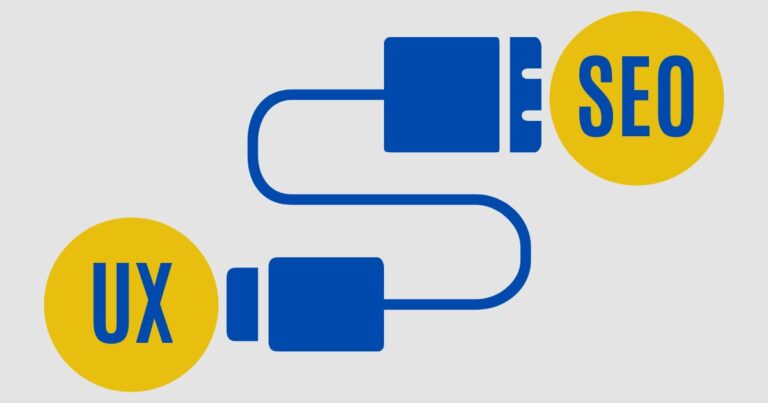About a decade ago, you could make your website rank well simply based on keywords and backlinks. Fast forward to today, however, this is no longer enough. Variables like time on site, bounce rates, and page visits have all become a vital part of how well your site performs on Google, and these variables are directly associated with something called UX.
What is UX?
What is user experience (UX)?
UX stands for user experience and relates to the quality of experience a user has with a product, service, system, or application. The right UX can help users reach from point A to point Z with minimal friction.
UX plays a vital role in determining how well your audience interacts with your site. Let’s say you want to book tickets for an upcoming movie. The first thing you do is type the name of the movie into Google and find the cinema website. Then you choose the film you’d like to watch and kickstart your purchasing process. Once your booking is complete, you receive an email with the tickets. Now, how well you transition through different steps in this process makes up your user experience.
If the process is quick, simple, and easy to navigate, you’ll have a good user experience. On the other hand, if it’s slow, complex, or plagued with wrong (or missing) information, you’ll have a bad user experience.

What is UX optimization?
Now that you know the answer to, “What is UX?” it’s time to understand how to optimize it.
UX optimization relates to understanding how your user experiences your website. It involves uncovering areas of improvement to ensure your audience has a great experience. Optimizing your UX allows your users to engage with your site, understand your product better, make purchases, and return to your dispensary repeatedly.
The process of user experience optimization involves understanding who your users are, what they need, and how they can access and engage with your site with ease. This data can then be used to determine what improvements you can make to ensure your users have a great journey navigating your site and products. For instance, if your site takes too long to load, your users may abandon your products altogether.
Optimizing your UX is also about paying attention to details such as color schemes, font size, button placement, page layout, and other elements that impact the way your audience interacts with your website.
o.

Why is UX important?
The importance of UX cannot be stressed enough. According to data, “a well-designed user interface can raise your website’s conversion rate by up to 200%, and a better UX design could yield conversion rates up to 400%.” The same research also suggests that “8 in 10 customers are willing to pay more for a better user experience.”
Simply put, the difference between good and bad user experience becomes the difference between a successful brand and a failing one. Why? because at the end of the day, a great UX creates happy customers who keep choosing your brand over your competition. Today, your products are only as good as the UX your dispensary offers. So, naturally, UX must be one of your biggest priorities.
How is UX related to SEO?
If you’re wondering how user experience affects SEO, here’s your answer:
Both UX and SEO come with the goal of helping users find what they’re looking for by creating engaging, accessible, and user-friendly websites.
When analyzing the credibility of your dispensary site, search engine algorithms don’t just look at technical elements. They also assess how your audience interacts with your website. If, for instance, Google’s algorithm finds that users leave your website within a few seconds of entering it, your website might quickly end up losing favor. This directly impacts how your pages rank on the search engine, making way for your competitors with better UX to rank higher.
How often did you run a Google search and click on the first couple of results, only to quickly decide that the content you’re being shown doesn’t serve your needs? And what if the content you see does make sense, but you simply can’t focus on it due to a mountain of pop-ups, ads, and slow loading times? These scenarios can make a user hit the back button in no time, ultimately crippling a site’s SEO ranking. If you want to rank higher, you’ll have to ensure your visitors stay on your website and if you want to invite visitors to your website, you’ll have to offer a good user experience.

UX factors that will impact SEO
Your website’s UX design and usability are the lifeblood of SEO. They directly impact your audience’s engagement, and therefore, ranking. Here are five UX factors that can impact your SEO performance:
- Your website’s navigation. Your users want to navigate your site with ease. If your SEO efforts complicate your site’s structure, your users will end up abandoning your website. Instead of using SEO to make your pages accessible to search engines, shift your focus to how you can make them accessible to users instead.
- Page layouts. Your pages can rank well only when your layout formatting and on-page SEO achieve the right balance. To allow your UX to shine, make content easy to digest, leverage headers in several forms, incorporate images and videos wherever possible, and use CTAs liberally.
- Site architecture. When optimizing your pages for SEO, it is critical to take your site’s architecture into account. Instead of taking the granular keyword approach that focuses on creating hundreds of SEO landing pages, take a decluttered approach that prioritizes quality over quantity and makes your site easy to navigate.
- Load speed. 40% of users abandon a website if it takes more than three seconds to load. This makes site speed an important ranking signal. Instead of making users “wait,” your UX and SEO must urge them to take action.
- Mobile friendliness. About 50% of the global web traffic comes via mobile phones. Moreover, about 76% of users who run a local search on their smartphones end up visiting the store physically within 24 hours. Aside from using the right SEO strategies, the only way to harness this traffic is to ensure your site is mobile-friendly.
Importance of Intuitive UX for Dispensaries
About 88% of users are unwilling to return to a website after having a bad user experience. On the other hand, every $1 invested in UX brings a return of $100 or a 9,900% ROI.
What makes intuitive UX so important for your dispensary? Here’s your answer in eight points:
- A great website design grabs attention, makes visitors stay on the website longer, and ultimately increases the chances of purchases.
- Good UX has the power to evoke emotions your audience can relate to, choosing you over your competition.
- Website UX that’s designed to make navigation and purchasing easier always wins.
- UX helps uphold your brand’s identity across its products and website. This consistency improves your credibility.
- A great UX design builds trust among your users. Your customers are likely to consider the appearance of your site before assessing its actual utility.
- Intuitive user experience turns your site into an engaging and interactive ground where your customers have fun exploring and experiencing your products
- Good UX encourages your users to make purchases by taking them on an engaging buyer’s journey.
- UX, as discussed earlier, is directly associated with your SEO efforts. The right balance between both can boost your rankings and outshine your competition.




